
Virtua Fighter is a fighting game created for the Sega Model 1 arcade platform by AM2, a development group within Sega, headed by Yu Suzuki. An early prototype version was location tested in Japan by August 1993, before the complete game was released worldwide in December 1993. It was the first arcade fighting game to feature fully 3D polygon graphics. The game was ported to Sega Saturn as a global launch title in 1994 and 1995, and also received a port to the Sega 32X.

Rise of the Robots is a fighting game released by Time Warner Interactive in 1994. Originally developed for the Amiga and DOS by Mirage's Instinct Design, it was ported to various video game consoles, including the Super NES, the Mega Drive, and the 3DO Interactive Multiplayer. The game includes a single-player mode in which the player assumes the role of the ECO35-2 Cyborg as he attempts to stop the Supervisor, who has taken over Electrocorp's facilities in Metropolis 4, and a two-player mode in which the second player controls a character chosen from among ECO35-2's enemies.
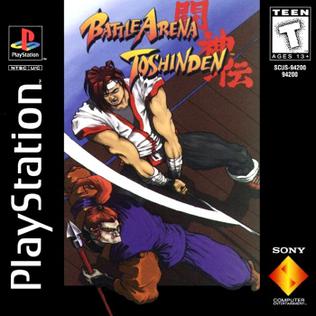
Battle Arena Toshinden, released as Toh Shin Den in Japan, is a 1995 fighting video game developed by Tamsoft and published by Takara for the PlayStation. It was one of the first fighting games, after Virtua Fighter on arcade and console, to boast polygonal characters in a 3D environment, and features a sidestep maneuver which is credited for taking the genre into "true 3D."

Mortal Kombat 3 is a 1995 arcade fighting game developed by Midway Games. It is the third main installment in the Mortal Kombat franchise and a sequel to 1993's Mortal Kombat II. As in the previous games, it has a cast of characters that players choose from and guide through a series of battles against other opponents. The game avoids the tournament storyline of its predecessors, as various warriors instead fight against the returning Shao Kahn, who has resurrected his bride Sindel and started an invasion of Earthrealm.

X-Men: Children of the Atom is a 1994 fighting game developed and published by Capcom and released on the CP System II arcade hardware. It was released in December 1994 in Japan and in January 1995 in North America and Europe.

Star Wars: Rebel Assault is a 1993 rail shooter video game developed and published by LucasArts for DOS, Macintosh, Sega CD and 3DO Interactive Multiplayer systems, set in the Star Wars universe. It is the first CD-ROM-only game to be published by LucasArts. The game's story focuses on a young pilot called Rookie One as they are trained by, and subsequently fights for, the Rebel Alliance in the Galactic Civil War.

War Gods is a 3D fighting video game originally released to arcades by Midway Games in 1996. Ports for the Nintendo 64, PlayStation and Windows were released in 1997. In the game, players control one of ten fighters who have been given great power by a mysterious ore that crashed-landed on Earth from outer space. The object of the game is to defeat all the other fighters to become the most powerful warrior on the planet.

Virtua Fighter 2 is a 1994 fighting video game by Sega. It is the sequel to Virtua Fighter (1993), and the second game in the Virtua Fighter series. Created by Sega's Yu Suzuki-headed AM2 team, it was designed on the purpose-made Sega Model 2 hardware which provided a significant upgrade in graphical capabilities. Following its release on the arcades, Virtua Fighter 2 was ported to the Sega Saturn home console in November 1995, while ports for some other platforms appeared later.
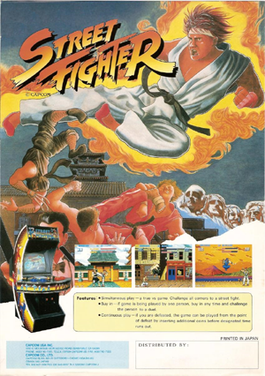
Street Fighter is a 1987 arcade fighting game developed and published by Capcom. It is the first competitive fighting game produced by the company and the first installment in the Street Fighter series. It was a commercial success in arcades and introduced special attacks and some of the conventions made standard in later fighting games, such as the six-button controls and the use of command-based special moves.

Battle Arena Toshinden 2, or Toshinden 2 (闘神伝2) in Japan, is a 1995 fighting video game co-produced by Tamsoft and Takara. Unlike the original Battle Arena Toshinden which was only for home systems, this sequel was originally a coin-operated arcade game for the Sony ZN-1 hardware, released in November 1995 and distributed by Capcom before its port to PlayStation shortly afterwards. It was also ported to Windows.

Weaponlord is a fighting game developed by Visual Concepts and published by Namco for the Super NES and Genesis in October 1995. Weaponlord has players select a character and defeat a series of opponents. The game is a weapons-based fighter, with various gory moves and a deep counterattack system.
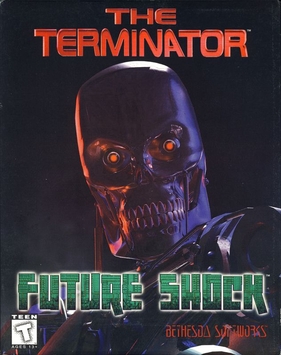
The Terminator: Future Shock is a 1995 first-person shooter video game by Bethesda Softworks based on The Terminator franchise. It received generally positive reviews. A sequel, Skynet, was released in 1996.

Wing Commander: Armada is a computer game set in the universe of Chris Roberts' Wing Commander franchise. Created by Origin Systems and distributed by Electronic Arts in 1994, Armada was the first official game of the Wing Commander series to feature multiplayer mode. This game was released shortly before Wing Commander III: Heart of the Tiger and features a new graphics engine, capable of rendering fully 3D ship models, which is more powerful than the sprite-based engine used in Wing Commander II: Vengeance of the Kilrathi.

Batman Forever is a beat 'em up video game based on the film of the same name. Though released by the same publisher at roughly the same time, it is an entirely different game from Batman Forever: The Arcade Game. The game was followed by Batman & Robin in 1998.

Savage Reign is 1995 weapon-based versus fighting game released by SNK for their Neo Geo arcade and home platform. It was ported to the Neo Geo CD, as well as for the PlayStation 2 along with its sequel Kizuna Encounter in Japan only. This compilation was re-released in the PlayStation Store for PlayStation 4 in December 2016.

Skynet is a 1996 first-person shooter video game developed by Bethesda Softworks based on the Terminator franchise. It was intended as an expansion pack for the predecessor The Terminator: Future Shock, but was adapted into a standalone product.

MechWarrior 2: Mercenaries is a video game released in September 1996 as a stand-alone expansion to MechWarrior 2: 31st Century Combat and the last BattleTech game made by Activision. In this game, the player takes control of an Inner Sphere mercenary squad, with control over finances and free choice of missions.

Street Fighter Alpha: Warriors' Dreams, known as Street Fighter Zero in Japan, Asia, South America, and Oceania, is a 2D arcade fighting game by Capcom originally released in 1995 for the CP System II hardware. It was the first all new Street Fighter game produced by Capcom since the release of Street Fighter II in 1991. Plotwise, it serves as a prequel to Street Fighter II and thus features younger versions of established characters, as well as characters from the original Street Fighter and Final Fight.
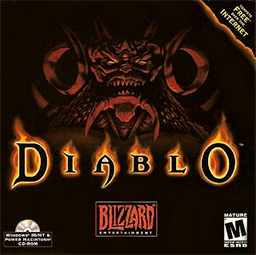
Diablo is an action role-playing video game developed by Blizzard North and released by Blizzard Entertainment in January 1997, and is the first installment in the video game series of the same name.
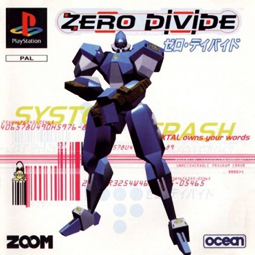
Zero Divide (ゼロ・ディバイド) is a 1995 3D fighting video game developed by Zoom for the PlayStation, originally released in August 1995 and also as a launch title in North America. A Windows PC port was later released, subtitled Techno Warrior in North America. Zero Divide has a robot theme and features mechanics similar to Virtua Fighter of the era; it was one of the earliest polygon-based fighting games, on home consoles coming only after Virtua Fighter, Battle Arena Toshinden and Tekken. The game received a positive reception and was re-released in 2010 on newer systems through the PlayStation Network in Japan.


















